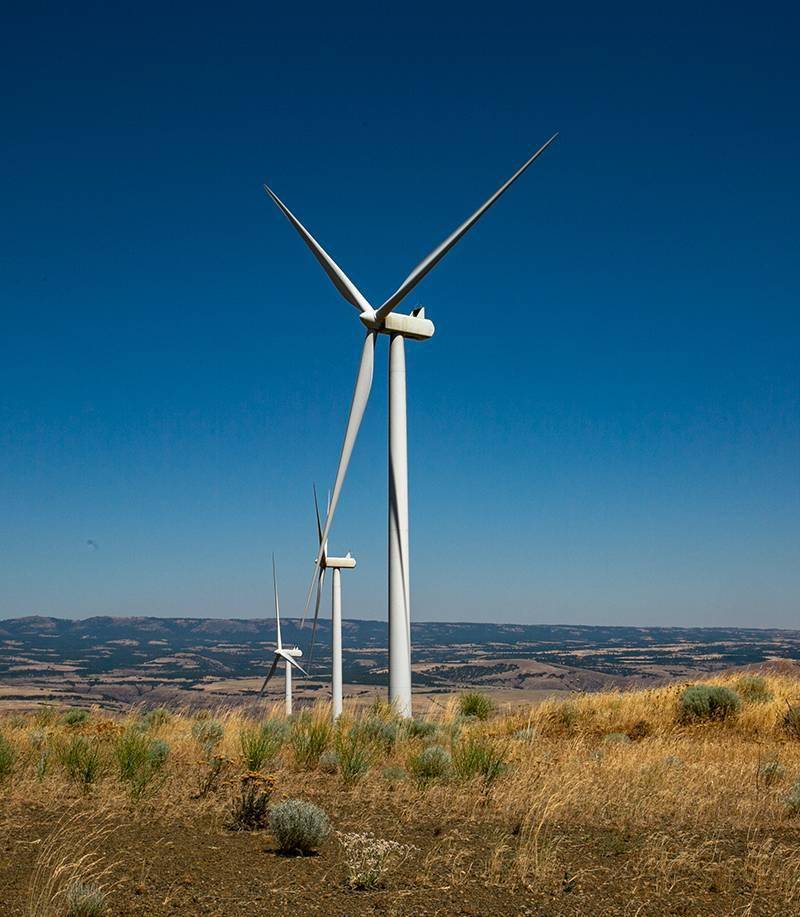The plan advances reduction of greenhouse gas emissions and the transition to clean energy sources
Press Release
PacifiCorp filed its 2023 Integrated Resource Plan on Friday with the six state utility commissions in the company’s service area, advancing its path to net-zero emissions.
The biennial long-term resource plan calls for a dramatic increase of nearly four times the company’s current wind and solar resources to a total of 20,000 megawatts by 2032, in addition to 7,400 megawatts of energy storage by 2029, as PacifiCorp continues to advance on its trajectory toward decarbonization and meet state and federal regulations and requirements.
It builds on PacifiCorp’s strong reliability by leveraging the abundant diversity of resources that are available across its vast multi-state transmission network, from the Rockies to the Pacific Coast. The plan continues investments in innovative emissions-free technologies, including advanced nuclear and non-emitting peaking resources that meet high-demand energy needs.
“The advanced nuclear resources that appear in the plan represent a promising future for our employees and communities in rural Utah and Wyoming,” said Rick Link, senior vice president of resource planning, procurement and optimization at PacifiCorp. “As we transition to a net-zero energy future, it is important to leverage the experience, skills and dedication of the communities that have supplied our energy needs for the past century.”
Although carbon capture utilization and storage as a resource type was not selected in the current preferred portfolio, PacifiCorp remains committed to exploring this technology where it makes sense for customers.
The plan also calls for continued progress on demand response and energy efficiency programs. PacifiCorp’s innovative resource plan is enabled by the expansion and modernization of its transmission network to deliver the most cost‑effective and reliable energy portfolio to serve customers.
“We are engaged in a fundamental remaking of our regional generation and transmission network, which has served our customers so well for decades,” Link said. “As new sustainable generating resources come online, we will expand our transmission network to ensure the reliability and reasonable costs our customers expect and deserve. This plan includes short-term actions and a 20-year vision designed to meet the needs of customers tomorrow and for the next generation.”
Developed with comprehensive data analysis and active stakeholder input spanning more than a year, the plan results in a system-wide 70% reduction of greenhouse gas emissions from 2005 levels by 2030, an 87% reduction by 2035 and a 100% reduction by 2050. PacifiCorp’s western states’ emissions reductions will be even more accelerated in compliance with individual state emissions targets and clean energy requirements.
The company remains focused on delivering safe, affordable and reliable power to its customers and communities. As part of these efforts, the company continues to drive market innovation, including plans to join the Extended Day Ahead Market with the California Independent System Operator in 2025. The EDAM will allow participants to trade the lowest-cost available energy a day in advance. The EDAM builds upon, and will expand on, the success of the Western Energy Imbalance Market, which has saved PacifiCorp customers over $591 million since 2014.
“Our Integrated Resource Plan is designed to determine the lowest-cost options for customers, adjusting for risks, future customer needs, system reliability, market projections and changing technology,” said Link. “We depended a great deal on public involvement by utility regulators, customers and other stakeholder groups to develop this plan. We are grateful for their involvement.”
Investments in new resources and transmission that appear in the company’s plan are envisioned for multiple states, from the Pacific Coast to the Rockies. The company is accelerating its investments in Wyoming and Utah with new transmission, advanced nuclear, renewable energy and storage resources. In addition to the advanced nuclear reactor project selected by the 2021 IRP for the Kemmerer, Wyoming, area by 2030, the 2023 plan selected two more advanced nuclear projects, which could be located in Utah near currently operating thermal coal plants. The company is also expanding transmission in Oregon and Idaho to increase access to renewable resources, serve growing customer demand, and substantially expand its transfer capability, resource diversity and resilience benefits between the West and the Rockies.
Developed through comprehensive data analysis and computer modeling of the future needs of customers, together with an assessment of available resource types, the Integrated Resource Plan yields a preferred portfolio of resources across a 20-year planning horizon. The plan selects the least-cost, least-risk resource types, which will become the basis for a future Request for Proposals, a competitive bidding process that will select specific projects for construction.
The preferred portfolio includes new investments in wind and solar generation, and battery storage co‑located with many of the solar projects, joined together with a major expansion of energy efficiency and customer demand-management programs.
To connect and optimize these diverse, clean resources across the West with a strengthened and modernized transmission network, the modeling process selected additional transmission projects that will be needed to ensure reliability for customers and create maximum opportunities for communities in the company’s service area to thrive.

